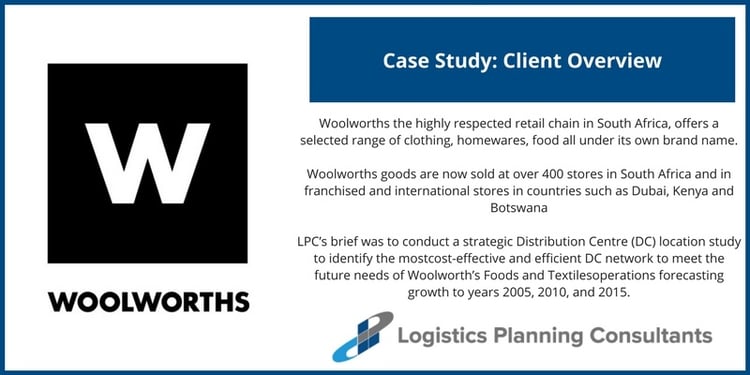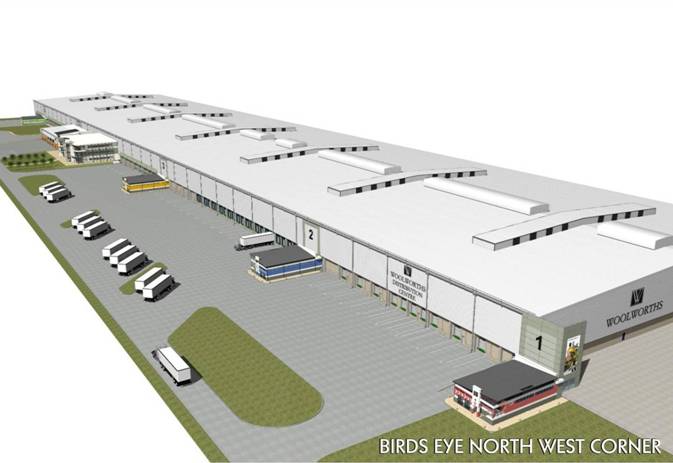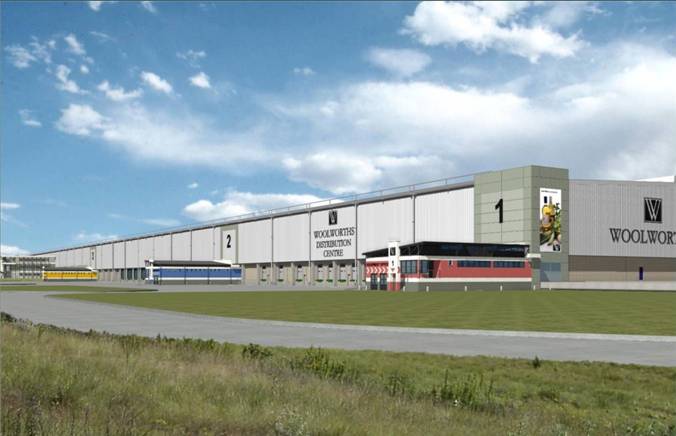
The scenarios included:
Building an ‘AS-IS’ Model of the current distribution network to include:
- Foods DC’s
- Textiles DC’s
- Delivery operations from DC’s to stores
- Supplier deliveries from production factories or points of import to RSA, into the DC’s
- Store delivery demands in terms of:
- demand volumes (cases, hanging garments etc)
- delivery frequencies
- delivery restrictions, by store, in terms of vehicle sizes and time curfews
- fixed and variable truck offloading times
- DC warehouse resources, and all related fixed and variable operational costs
- DC transport resources
- Inventory costs
- Sales order processing and other distribution related IT/IS costs

The ‘AS IS’ model was validated to ensure that it provided a sufficiently accurate representation of the current network at the time, and where it was necessary, made adjustments to enhance its accuracy.
Using the validated ‘AS IS model’ cost indices and KPI’s for benchmarking purposes were generated against alternative scenarios, these being:
- The optimum location and size for a single campus development for both Foods and Textiles and to identify the warehousing and transport related operational costs and resource requirements and being able to provide benchmarks for comparison with the current ‘AS-IS’ model.
- The optimum locations each for separate Foods and Textiles DC’s, (one of each)
The model enabled Woolworths to determine:
- The least total cost distribution network based on the use of multiple numbers of DC’s each for Foods and, or, textiles and the warehousing and transport related costs and resource requirements for each, together with the store and volume allocations to each.
- The least total cost distribution network(s) that can be achieved through the combined use of existing DC resources (Foods and, or, Textiles) combined with new and again, deriving the warehousing and transport related costs and resource requirements for each, together with store and volume allocations to each.
- Identify and quantify the potential opportunities and benefits to be achieved by using a common delivery fleet for Foods and Textiles deliveries to stores.
The operational costs were then benchmarked and the unit cost and performance KPI’s for each scenario against the AS IS results bench marched against each other.

LPC then advised on the ‘Key Decision Drivers’ that influence operational costs and performance and the relative importance of each. The results of the scenarios were ranked by:
i) Operational costs
ii) Unit cost, performance
iii) KPI’s
Jointly with UPN and Woolworths, two preferred scenarios were selected and sensitivity testing was conducted on each to determine the potential effects on them of:
- Changes in demand or the rate of growth in demand
- Potential changes in key cost parameters (e.g. transport, fuel costs, building rental costs, interest rates, etc)
In their Site Selection Criteria Woolworths have quoted the following:
- The centurion distribution hub offers excellent and flexible road infrastructure to ensure efficient on time deliveries to stores now and in the future.
- Suppliers delivering to Woolworths distribution centres in Gauteng will drive less kilometres to deliver their product. This will also ensure their trucks spend less time on the roads. Gas emissions for both primary and secondary distribution will be reduced.
- From a workforce perspective, in the long term, Centurion will ensure easier and more flexible transportation for the workforce due to the Tembisa and Olievenhoutbosch areas in close proximity.


